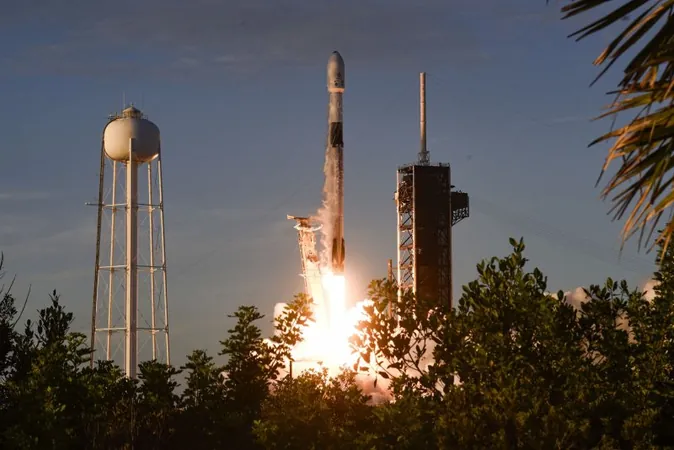
SpaceX's Stellar Launch: Trio of Probes Set to Unravel Solar Secrets
2025-09-24
Author: Jacob
A Game-Changing Mission to Study Space Weather
On September 24, SpaceX catapulted into the skies a groundbreaking trio of probes designed to dissect the mysteries of the sun and the impacts of space weather on our planet. The Falcon 9 rocket launched brilliantly from NASA's Kennedy Space Center in Florida at approximately 7:30 a.m. EDT.
NASA’s IMAP: A Lifeline for Astronauts
At the heart of this incredible payload was NASA's Interstellar Mapping and Acceleration Probe (IMAP), which will analyze the heliosphere—a vast magnetic bubble created by the sun that encases our entire solar system. This bubble serves as a protective shield against harmful radiation, crucial for the safety of astronauts venturing into space.
"Radiation represents a real threat to astronauts, especially those aiming for the moon or even Mars," stated Nicky Fox, associate administrator of NASA's Science Mission Directorate. IMAP is set to issue essential radiation alerts, ensuring the safety of future explorers as they travel beyond Earth’s magnetosphere.
A Journey to the Unknown
The IMAP probe, alongside its companions, will embark on a 108-day journey to the Lagrange point, located about one million miles from Earth in the direction of the sun. This special spot acts as a gravitational balance point, making it an ideal location for observing cosmic phenomena.
Understanding Earth’s Exosphere with New Technology
Adding to the excitement is NASA's Carruthers Geocorona Observatory, which will explore Earth's exosphere to shed light on how space weather influences our atmosphere. This pioneering work seeks to deepen our understanding of environmental interactions that affect daily life.
A Shield Against Solar Storms
The third probe, a creation of the U.S. National Oceanic and Atmospheric Administration (NOAA), is the Space Weather Follow-on spacecraft. Its mission is to meticulously track solar storms and provide crucial forecasts that will protect both aerial and terrestrial interests. These solar storms can severely disrupt Earth’s magnetic field, posing risks to satellites and even power grids.









 Brasil (PT)
Brasil (PT)
 Canada (EN)
Canada (EN)
 Chile (ES)
Chile (ES)
 Česko (CS)
Česko (CS)
 대한민국 (KO)
대한민국 (KO)
 España (ES)
España (ES)
 France (FR)
France (FR)
 Hong Kong (EN)
Hong Kong (EN)
 Italia (IT)
Italia (IT)
 日本 (JA)
日本 (JA)
 Magyarország (HU)
Magyarország (HU)
 Norge (NO)
Norge (NO)
 Polska (PL)
Polska (PL)
 Schweiz (DE)
Schweiz (DE)
 Singapore (EN)
Singapore (EN)
 Sverige (SV)
Sverige (SV)
 Suomi (FI)
Suomi (FI)
 Türkiye (TR)
Türkiye (TR)
 الإمارات العربية المتحدة (AR)
الإمارات العربية المتحدة (AR)